Author: Gerry Acuna
What’s New for Flu?
September 30, 2021
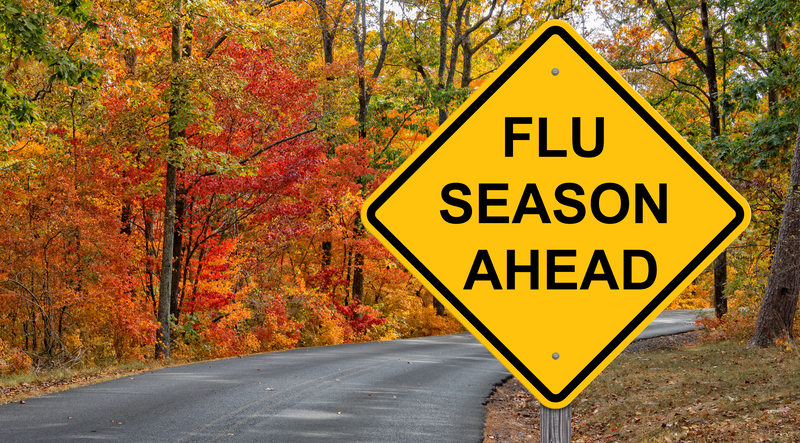
During flu season last year, a record-low number of flu cases was linked to face mask wearing, remote work and school attendance, and physical distancing. But this year, experts fear that the reopening of schools, decreased adherence to pandemic precautions, and surging breakouts and Delta variant infections could result in a serious flu and COVID-19-season.
Take note of differences for 2021-2022 flu season
The Centers for Disease Control and Infection (CDC) pinpoints a few things that are different for the 2021-2022 influenza (flu) season including:
- The composition of flu vaccines has been updated.
- All flu vaccines will be quadrivalent (four component), meaning designed to protect against four different flu viruses. For more information: Quadrivalent Influenza Vaccine | CDC.
- Licensure on one flu vaccine has changed. Flucelvax Quadrivalent is now approved for people 2 years and older.
- Flu vaccines and COVID-19 vaccines can be given at the same time.
- Guidance concerning contraindications and precautions for the use of two flu vaccines – Flucevax Quadrivalent and Flublok Quadrivalent – were updated.
Take time now to get a flu vaccine
You can get your flu vaccine as you normally do, whether that’s through your health care provider or your local pharmacist. CDC has been working with health care providers and state and local health departments on how to vaccinate people against flu without increasing their risk of exposure to respiratory viruses, like the virus that causes COVID-19, and has released Interim Guidance for Immunization Services During the COVID-19 Pandemic.
- CDC recommends a yearly flu vaccine as the first and most important step in protecting against flu viruses.
- Flu vaccines help to reduce the burden of flu illnesses, hospitalizations, and deaths on the health care system each year.
- This season, all flu vaccines will be designed to protect against the four flu viruses that research indicates will be most common.
- Everyone 6 months and older should get an annual flu vaccine, ideally by the end of October.
- Vaccination of people at higher risk of developing serious flu complications is especially important to decrease their risk of severe flu illness.
- People at higher risk of serious flu complications include young children, pregnant women, people with certain chronic health conditions like asthma, diabetes or heart and lung disease, and people 65 years and older.
- Vaccination also is important for health care workers, and other people who live with or care for people at higher risk to keep from spreading flu to them. This is especially true for people who work in long-term care facilities, which are home to many of the people most vulnerable to flu.
- Children younger than 6 months are at higher risk of serious flu illness but are too young to be vaccinated. People who care for infants should be vaccinated instead.
Take preventive actions to reduce the spread of flu
- Avoid
close contact with people who are sick.
- If you are sick, limit contact with others as much as possible to keep from infecting them.
- Cover
coughs and sneezes.
- Cover your nose and mouth with a tissue when you cough or sneeze. Throw the tissue in the trash after you use it.
- Wash your hands often with soap and water. If soap and water are not available, use an alcohol-based hand rub.
- Avoid touching your eyes, nose, and mouth to prevent the spread of germs.
- Clean and disinfect surfaces and objects that may be contaminated with viruses that cause flu.
- For flu, CDC recommends that people stay home for at least 24 hours after their fever is gone except to get medical care or other necessities. Fever should be gone without the need to use a fever-reducing medicine. Note that the stay-at-home guidance for COVID-19 may be different. Learn about some of the similarities and differences between flu and COVID-19.
- In the context of the COVID-19 pandemic, local governments, or public health departments may recommend additional precautions that you should follow in your community.
Take antiviral drugs if prescribed
- If you are sick with flu, antiviral drugs can be used to treat your illness.
- Antiviral drugs are different from antibiotics. They are prescription medicines and are not available over-the-counter.
- Antiviral drugs can make flu illness milder and shorten the time you are sick. They may also prevent serious flu complications.
- Studies show that flu antiviral drugs work best for treatment when they are started within 2 days of getting sick, but starting them later can still be helpful, especially if the sick person has a higher risk factor or is very sick from flu.
- If you are at higher risk from flu and get flu symptoms, call your health care provider early so you can be treated with flu antivirals if needed. Follow your doctor’s instructions for taking this drug.
Flu symptoms include fever, cough, sore throat, runny or stuffy nose, body aches, headache, chills, and fatigue. Some people also may have vomiting and diarrhea. People may be infected with flu and have respiratory symptoms without a fever. Visit CDC’s website to find out what to do if you get sick with flu. Learn about some of the similarities and differences between flu and COVID-19, and the difference between flu and the common cold.
InsureYouKnow.org
After you have gotten your vaccine for the 2021-2022 flu season, keep a record of the date of and description of your injection at insureyouknow.org. On this secure website, you also can keep copies of your insurance cards and driver’s license that could be helpful when you fill out medical forms at your doctor’s office or neighborhood pharmacy.
In an Emergency, Be Ready to Go or to Stay
September 13, 2021
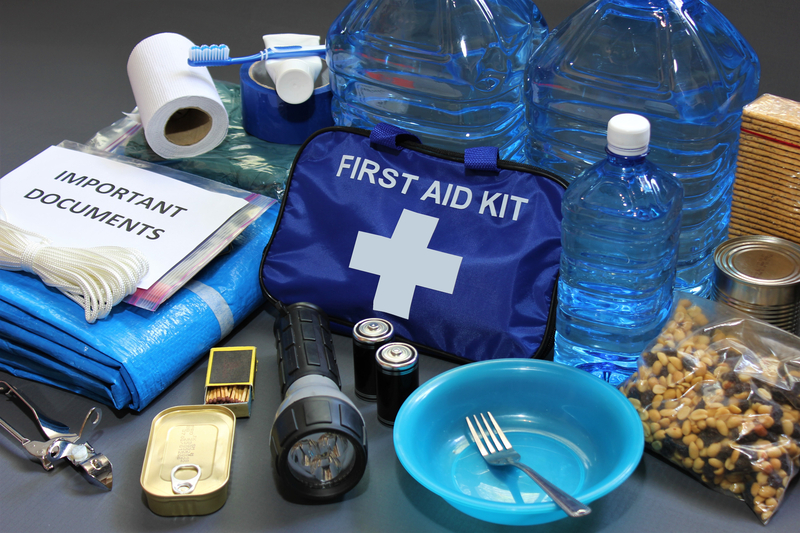
Emergencies often are unpredictable. But you can still plan for them. If you’ve experienced a catastrophic event—a hurricane, a flash flood, a fire in your home or on your property, or a winter storm that left you without electricity, food, and water—you may live in constant fear that you will relive a dangerous and stressful experience. Or, you can create a “go bag” and a “stay bag” that can help ease your mind in case of an emergency.
Emergency Go Bag
Prepare a portable kit that contains items that you’ll need to survive if you suddenly have to leave your home. Your emergency go bag should contain the following items:
- Personal identification
- Recent family photos for identification, including pictures of your pets
- Copies of important information, including contact numbers, passports, bank and credit card account numbers, medical records, and insurance information sealed in a waterproof container
- Bottled water and food, including high-energy snacks, in easy-to open containers, utensils, and bowls
- Prescription medications and a list of your prescriptions
- Small first-aid kit, including ice packs, bandages, hand sanitizer, gloves, ointment, pain relievers, stomach remedies, cough and cold medicines, and fluids with electrolytes
- Blanket/throw
- Sturdy shoes or boots and socks
- Warm clothes, rain gear, and hats
- Extra pair of glasses, contact lenses and supplies, dentures, and hearing aids/batteries
- Personal hygiene items, including face masks, soap, wipes, toilet paper, feminine hygiene products, toothbrush, toothpaste, paper towels, and household chlorine bleach
- Items such as canes, walkers, diapers, and formula for family members–children, seniors, and people with disabilities—with special needs
- Essential items for pet care: water, bowls, food, updated medical records, leashes, collar ID tags, crates, plastic bags, and carriers
- Flashlight and LED headlamp
- Candles
- Waterproof matches and lighter
- Battery operated/manual radio
- Extra batteries (sizes AA, AAA, C, and D)
- Pocketknife
- Whistle and pepper spray
- Extra house and car keys
- Solar and electric chargers for phones and other electronics
- Plastic garbage bags and toolkit
- Paper, pens, and tape for leaving messages
- Family communication plan that includes emergency phone numbers
- Regional road map if you need to travel
- Small amounts of cash–such as coins, one, and five dollar bills in case you can’t use your credit/debit cards
- Toys and games for kids
You also should consider to:
- Prepare an emergency go bag for each member of your household
- Store your emergency go bag in a place that is easy to get to, such as under a bed, in a closet, next to a door, in the garage, or in the trunk of your car
- Prepare emergency go bags for year-round use: spring, summer, fall, and winter
- Update your emergency go bag every six months
- Replace items that will expire in the upcoming months such as food and medical supplies
- Equip a vehicle bag with the following items:
- Jumper cables, flashlight, and extra batteries
- First aid kit
- Red bandana or help signal
- Packaged food, water, and a refillable water bottle for each person
- Sand or cat litter and a small shovel
- Gloves, hat, boots, jacket, blankets or sleeping bags, and rain gear
Although your emergency go bag will include a number of items, make sure your bag is sturdy and easy to carry.
Emergency Stay Bag
An emergency stay bag should contain a two-week supply of essentials in the event you have to hunker down at home without power, water, or heat. If you’ve prepared your emergency go bag, you can use many of its contents if you need to stay at home and wait for inclement weather or other adverse conditions to improve.
You’ll need greater quantities of supplies for your emergency stay bag and may want to add:
- Firewood if you’ll be relying on your fireplace for heat
- Extra blankets
- Duct tape
- Multipurpose tool
- Trash bags for sanitation
- Fire extinguisher
After you’ve collected extra items for your emergency stay bag, put them in one place—like a large plastic bin or two—so they don’t get used and will be at the ready if an emergency situation strikes.
InsureYouKnow.org
With the right gear in your emergency go and stay bags, you can be prepared to face unpredictable circumstances that force you to deal with whatever comes your way. In addition to keeping copies of important records safely in waterproof containers as recommended, you also should file important information, including contact numbers, passports, bank and credit card account numbers, medical records, insurance information, and a list of your prescriptions electronically at insureyouknow.org.
Saving with a 529 College Plan
August 30, 2021

As college students return to campuses this fall, they (and in many cases, their parents) face costs that have tripled in 20 years, with an annual growth rate of 6.8 percent.
Melanie Hanson at educationdata.org reports that the average cost of college (considered to be any postsecondary educational institution that offers an undergraduate degree program) in the United States is $35,720 per student per year. Current college cost data also reveal:
- The average in-state student attending a public 4-year institution spends $25,615 for one academic year.
- The average cost of in-state tuition alone is $9,580; out-of-state tuition averages $27,437.
- The average traditional private university student spends a total of $53,949 per academic year, $37,200 of it on tuition and fees.
- Considering student loan interest and loss of income, the ultimate cost of a bachelor’s degree may exceed $400,000.
In the academic world, the cost of college is generally referred to as the cost of attendance (COA). Each college has its own COA consisting of five items:
- Tuition and fees
- Books and supplies
- Room and board
- Transportation
- Personal expenses
Twice per year, the federal government recalculates the COA for each college and then adjusts the figures for inflation to determine students’ financial needs when they apply for financial aid.
Planning in Advance
Advance planning for education costs is advisable to keep ahead of college inflation.
Regular investments add up over time. By investing even a small amount of money on a regular basis in a college fund, you have the potential to accumulate a significant amount if you start when your child (or grandchild) is young.
Once you have a sense of your college savings needs, make sure you are investing the money appropriately. Among several available college savings options described by Fidelity, a great place to start is to open and contribute to a 529 college savings plan account. It’s popular with parents and grandparents because there are few restrictions and the benefits are plentiful. You can potentially reduce your taxes and retain control over how and when you spend the money.
Education savings plans were first created in 1986, when the Michigan Education Trust established a prepaid tuition plan. More than a decade later, Section 529 was added to the Internal Revenue Code, authorizing tax-free status for qualified 529 tuition programs. Today there are more than 100 different 529 plans available to suit a variety of education savings needs.
To make sure you are on track with your savings goals, and to ensure you have an appropriate investment mix, revisit your plan at least annually. Over time, you will likely need to update the costs of schools you are considering, your financial aid situation, your child’s school preferences, school location, and your investment performance. When you’re ready to start paying for school, withdrawals are federal income tax-free when used for qualified education expenses.
Setting Up and Using a 529 Savings Account
- The requirements to open a 529 savings account are simple. You must be a U.S. resident, at least 18-years old, and have a Social Security or tax ID number.
- 529 plan savings can cover a range of educational expenses, in addition to college tuition. You can use up to $10,000 from a 529 account each year per beneficiary on elementary, middle, or high school tuition. At the post-secondary level, money saved in a 529 plan account can be used for a variety of higher-education-related expenses: tuition and fees, room and board, books and supplies, and computers and related equipment.
- Money saved in a 529 plan may have only a small impact on financial aid eligibility.
- You don’t have to be related to the beneficiary on the account to open a 529 account for them. Friends or family members can open a 529 college savings account regardless of their income or relationship to the student—and can even name themselves as the student beneficiary on the account. Anyone can contribute and you can encourage donations to a college savings account as a birthday or holiday gift.
Reaping Tax Benefits
A 529 savings plan works much like a Roth 401(k) or Roth IRA by investing your after-tax contributions in mutual funds, ETFs (exchange-traded funds), and other similar investments. Your investment grows on a tax-deferred basis and can be withdrawn tax-free if the money is used to pay for qualified higher education expenses. Contributions are not deductible from federal income taxes.
You may also qualify for a state tax benefit, depending on where you live. More than 30 states offer state income tax deductions and state tax credits for 529 plan contributions.
Choosing a 529 Plan
Nearly every state has at least one 529 plan available, but you’re not limited to using your home state’s plan. Each 529 plan offers investment portfolios tailored to the account owner’s risk tolerance and time horizon. Your account may go up or down in value based on the performance of the investment option you select. It’s important to consider your investment objectives and compare your options before you invest.
Withdrawing from a 529 Plan
You can use your education savings to pay for college costs at any eligible institution, including more than 6,000 U.S. colleges and universities and more than 400 international schools.
Once you’re ready to start taking withdrawals from a 529 plan, most plans allow you to distribute the payments directly to the account holder, the beneficiary, or the school. Read “How to Pay Your Tuition Bill With a 529 Plan” to learn more.
Remember, you will need to check with your own plan to learn more about how to take distributions. Depending on your circumstances, you may need to report contributions to or withdrawals from your 529 plan on your annual tax returns.
Dealing with Leftover Funds
If your child doesn’t go to college or gets a scholarship, you won’t lose the college fund you have accumulated. Generally, you will pay income tax and a penalty on the earnings portion of a non-qualified withdrawal, but there are some exceptions. The penalty is waived if:
- The beneficiary receives a tax-free scholarship
- The beneficiary attends a U.S. Military Academy
- The beneficiary dies or becomes disabled
The earnings portion of the withdrawal will be subject to federal income tax, and sometimes state income tax.
If you have leftover money in your 529 plan and you want to avoid paying taxes and a penalty on your earnings, you have a few options, including:
- Change the beneficiary to another qualifying family member
- Hold the funds in the account in case the beneficiary wants to attend school later
- Make yourself the beneficiary and further your own education
- Roll over the funds to a 529 ABLE account, a savings account specifically for people living with disabilities
- Since January 1, 2018, parents also have the option to take up to $10,000 in tax-free 529 withdrawals for K-12 tuition
- Since January 1, 2019, qualified distributions from a 529 plan can repay up to $10,000 in student loans per borrower for both the beneficiary and the beneficiary’s siblings
You can withdraw leftover money in a 529 plan for any reason. However, the earnings portion of a non-qualified withdrawal will be subject to taxes and a penalty, unless you qualify for one of the exceptions listed above. If you are contemplating a non-qualified distribution, be aware of the rules and possible tactics for reducing taxes owed.
InsureYouKnow.org
If you’re interested in setting up a 529 college savings plan, do your homework on the benefits, qualified uses for account balances, and the low impact on financial aid. File your findings and, once you start receiving account statements, keep track of your college saving account as it prospers.
Retirees Face the Rising Cost of Living
August 14, 2021
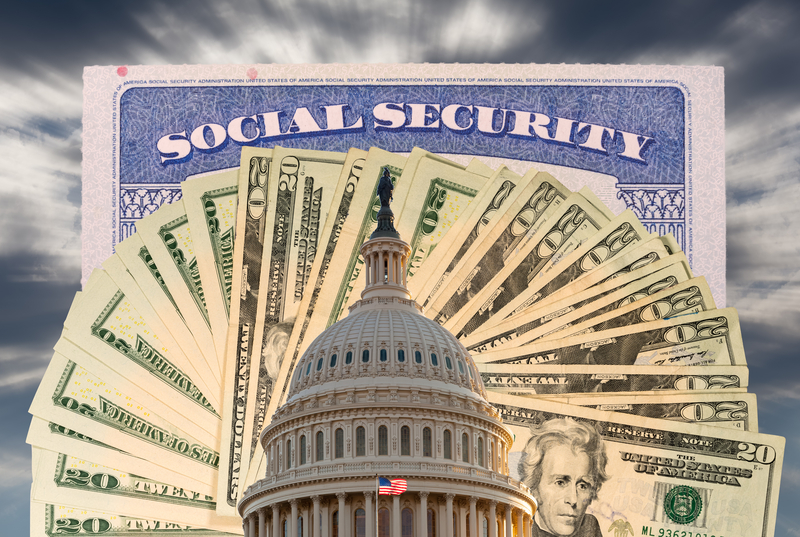
Have you noticed this year that your grocery bill has been rising and the price of gas is higher each time you fill up at the pump? You also may have been shocked by sticker prices on new and used cars and trucks resulting from inflation in recent months.
Consumer Price Index
On July 11, 2021, the Labor Department reported its consumer price index (CPI) rose 5.4 percent in July from a year earlier, in line with June’s figure and matching the largest jump since August 2008. White House officials are cautiously optimistic that the current increase in prices will be transitory, citing a continued drop in forward prices for lumber and other goods that experienced sharp increases because of supply chain bottlenecks. Steel capacity also had risen substantially over the past few months, they said.
The Federal Reserve has been keeping a close eye on inflation reports since it’s the central bank’s job to maximize employment and keep prices stable. Chairman Jerome Powell and other officials acknowledge the recent acceleration in prices but believe that the inflation is “transitory” and that prices won’t continue to increase at their current pace for too long.
As one of the most-cited inflation gauges, the CPI measures changes in how much American consumers pay for everyday goods and services including groceries, gasoline, clothes, restaurant meals, haircuts, concerts, and automobiles.
The CPI and other price measures have been on the rise in 2021 in large part because of a comeback in consumer spending and U.S. gross domestic product (GDP) as COVID restrictions eased.
Economic activity as measured by GDP rose at an annualized rate of 6.5 percent in the second quarter as Americans frequented restaurants, took summer vacations, and resumed other activities that COVID-19 had hindered.
Consumer Spending
Consumer spending, bolstered by the nationwide rollout of vaccines, jumped 11.8 percent during the three months ending June 30, the second-fastest rate since 1952.
At the same time, the pent-up demand for travel, retail, and restaurants has left many businesses scrambling to keep up and led to several setbacks on the supply side of the U.S. economy.
Employers who have struggled to find workers have hiked pay or offered signing bonuses to help fill the record 10.1 million job openings across the economy at the end of June. The leisure and hospitality sector, which includes restaurants, bars, and hotels, has one of the highest levels of job openings at more than 1.6 million.
But instead of absorbing higher labor and material costs, some businesses have begun to pass on the impact of higher wages to their consumers.
Inflation and Retirees
Higher prices take a significant toll on retirees. Social Security benefits rise only once a year. “Those with modest Social Security benefits are the ones who really have trouble,” reports Mary Johnson, Social Security and Medicare policy analyst at The Senior Citizens League, a non-partisan advocacy group. “Other retirees have had to tap more of their savings than they had planned because the Social Security benefit didn’t keep up with 2021’s hot inflation,” she says.
Inflation could prompt largest Social Security cost-of-living adjustment in decades. Retirees could see a 6.1 percent bump to their Social Security benefits in 2022. That would be the biggest increase since 1983, according to The Senior Citizens League, which calculated the figure.
The Social Security Administration typically announces the amount of the annual cost of living adjustment (COLA), if any, in October. The increase in benefits typically goes into effect in January.
You might not see all the increase in your benefit payment. If your Medicare Part B premiums are deducted from your Social Security (as is the case with 70 percent of Part B enrollees), a Medicare rate increase could offset all or part of the COLA.
The Social Security COLA for 2021 was 1.3 percent. For many retirees, that meant just $20 more per month. Over the years, the increases have led to a loss of buying power for seniors, according to research from The Senior Citizens League.
The amount your Social Security check will increase will be based on a combination of your underlying benefit and the Social Security COLA. Assuming the Social Security COLA is at the 6.1 percent level for 2022, and you are receiving the maximum Social Security benefit of $3,895, you would get an additional $237.60 per month. This would mean an increase of $2,851.14 per year.
The jump in benefits will be a bit more modest for those receiving the average Social Security benefit in 2021. Social Security benefits averaged just $1,543 per month in 2021. Again, assuming a 6.1 percent Social Security COLA, you could see your retirement benefits increase by $94.12 per month. When living on a fixed income, an additional $1,129.48 can go a long way.
If you are still working, make sure you have other retirement income to help maintain your standard of living. Even at the maximum Social Security benefit, you will have a tough time keeping your standard of living on Social Security alone. Work with a trusted financial planner to help determine the optimal time to claim your Social Security benefits and to set up a monthly payment schedule.
Currently, 69 million Americans are collecting Social Security benefits. So, a significant increase in the COLA to Social Security will be significant for the budgets of many retirees. Before the announcement is made in October, the Today show offers hints to help you save money at the grocery store, including keeping track of your grocery spending, taking inventory of what you already have and using it, and meal planning to reduce food waste and save on your food bill.
Smart shoppers will also watch for sales, comparison shop, and consider buying useful, non-perishable items in bulk and even making use of an extra freezer whenever possible. When it comes to saving money, cheap and healthy can go hand in hand.
InsureYouKnow.org
If you currently collect Social Security benefits or plan to in 2022, you can track at insureyouknow.org your monthly spending patterns, file copies of your Social Security and Medicare statements, as well as savings accounts you may have set up for vacations, rainy days, or emergency contingency plans.
August = Back to School
July 30, 2021
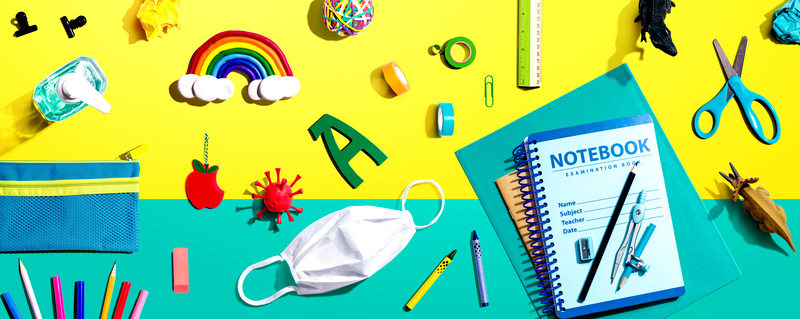
Back to School Month has been observed in August since the 1960s to help parents, students, and teachers prepare for a new academic year. In addition to shopping for back-to-school supplies, backpacks, and clothes during the month, parents also will need to address how the coming academic year could look different, especially if their children attended virtual classes exclusively during the 2020-2021 school year.
In reaction to the COVID-19 pandemic, physical arrangements in schools could result in the placement of desks far apart from one another, maintenance of physical distance by teachers and students, the possibility of students and teachers staying in their classrooms for lunch, and the wearing of face masks.
COVID-19 also can affect children and young people socially, emotionally, and mentally. These issues also need to be addressed when students return in person to school.
COVID-19 Prevention in Schools
To help students return to school in person, the Centers for Disease Control and Prevention (CDC) provides Guidance for COVID-19 Prevention in K-12 Schools, that includes the following key takeaways.
- Students benefit from in-person learning, and safely returning to in-person instruction in the fall 2021 is a priority.
- Vaccination is currently the leading public health prevention strategy to end the COVID-19 pandemic. Promoting vaccination can help schools safely return to in-person learning as well as extracurricular activities and sports.
- Masks should be worn indoors by all individuals (age 2 and older) who are not fully vaccinated. Consistent and correct mask use by people who are not fully vaccinated is especially important indoors and in crowded settings, when physical distancing cannot be maintained.
- CDC recommends schools maintain at least 3 feet of physical distance between students within classrooms, combined with indoor mask wearing by people who are not fully vaccinated, to reduce transmission risk. When it is not possible to maintain a physical distance of at least 3 feet, such as when schools cannot fully re-open while maintaining these distances, it is especially important to layer multiple other prevention strategies, such as indoor masking.
- Screening testing, ventilation, handwashing, and respiratory etiquette, staying home when sick and getting tested, contact tracing in combination with quarantine and isolation, and cleaning and disinfection are also important layers of prevention to keep schools safe.
- Students, teachers, and staff should stay home when they have signs of any infectious illness and be referred to their healthcare provider for testing and care.
- Many schools serve children under the age of 12 who are not currently eligible for vaccination. Therefore, this guidance emphasizes implementing layered prevention strategies to protect people who are not fully vaccinated, including students, teachers, staff, and other members of their households.
- COVID-19 prevention strategies remain critical to protect people, including students, teachers, and staff, who are not fully vaccinated, especially in areas of moderate-to-high community transmission levels.
- Localities should monitor community transmission, vaccination coverage, screening testing, and occurrence of outbreaks to guide decisions on the level of layered prevention strategies.
COVID-19 Stress and Coping
According to the Child Mind Institute, “Children who are heading back to the classroom this fall are facing unusual challenges, and one of them is anxiety about being separated from their families after months of togetherness. For some kids it will trigger separation anxiety, in addition to the anxiety they may feel about leaving their safe harbor from the pandemic.”
“Kids are just really used to being home with their parents now,” notes Jennifer Louie, PhD, a clinical psychologist at the Child Mind Institute. Even kids who had comfortably adjusted to being in school before the pandemic are finding it stressful to be separated now. And, she adds, “there is the added fear that other people are not as safe as we thought they were.”
For some children, the excitement of going back to school after so many months stuck at home will outweigh potential anxiety, Dr. Louie notes. “But I think the kids who already have anxiety are more prone to being more anxious going back.”
So, parents have a complicated mission dealing with all this anxiety and uncertainty: reassuring children that it’s safe to be away from them, while also encouraging them to be careful and preparing them to be flexible in case the situation changes. How do you do that? Here are some pointers from the Child Mind Institute.
- Validate their feelings: Parents should stay calm and positive. If your child lets you know that he’s worried or is having negative feelings about going back to school, reassure him that his feelings are normal. The knowledge that he is not alone in this experience will help your child feel he’s being heard and understood. Kids appreciate knowing what you’re doing to manage the situation and are willing to work together to ask and answer questions that can help them stay calm.
- Set the tone: Try to keep your own anxiety at bay so you don’t fuel your child’s apprehensiveness about returning to school in person. If your child has questions that you can’t answer, work together to find guidance from school or medical authorities.
- Help them think positively: Try to help your children focus on positive features about returning to school. What are they looking forward to? What do they hope they will enjoy each day at school with their friends and favorite teachers?
- Practice separation: For children who are anxious about being apart, experts suggest practicing separation, starting in small ways and building tolerance for more independence. Encourage your children to play independently and not rely on the constant presence of a parent.
- Have a routine: Making sure that your child has a predictable routine leading up to school can help kids, especially younger ones, feel more secure. Before the school bell rings on the first day of school, your children can practice getting up early and participating in morning routines, discussing homework expectations, and adhering to bedtime rituals.
- Emphasize safety measures: Review with your child the measures that her school has taken to put safety rules in place to minimize risk and keep everyone safe.
- Encourage flexibility: Since there is a possibility that children who start school in person may be expected to switch back to remote learning, at least for some periods of time, it’s helpful for kids to know that you’re prepared for changes that may occur.
Going back to school this year will have a new set of challenges when students return in person to campuses nationwide. Parents should review the safety rules and regulations for their children’s specific school and actively participate in keeping everyone safe.
InsureYouKnow.org
At insureyouknow.org, you can keep your family’s COVID-19 vaccination records, immunization documentation, and lists of prescriptions in a safe place.
Get Ready, Get Set, Go Electric!
July 13, 2021

Electric vehicles (EVs) are becoming more popular, practical, and affordable, but they aren’t new additions to the transportation industry. The first electric car was invented in 1832 by Robert Anderson and this mode of travel became popular beginning in 1889 when William Morrison made the first successful EV in the United States. Originally, EVs could only travel up to 100 miles on a single charge and were more expensive to purchase than vehicles that relied on combustible engines.
Mass production of EVs as we now know them started in the 1990s. During the past few years, EVs have experienced a rise in popularity as battery-powered technology has progressed and costs have declined. Climate and environmental awareness have prompted support for clean transportation, increased charging opportunities, and EV adoption.
In the United States, the Biden administration has pledged to cut the pollution driving global warming by 50 percent from 2005 levels by 2030. If you are committed to this goal that requires a radical transformation of the nation’s economy away from fossil fuels, you may want to consider the costs, insurance coverage, and benefits associated with owning an EV with zero emissions.
Costs and Incentives
Powered by a battery pack, EVs are in demand because of their quieter, simpler, and less-polluting driving experience. According to Car and Driver, “Basic electric models start at around $30,000 with luxury model prices climbing to $80,000 and more. Usually, a car buyer will pay at least $10,000 more for an electric car than they would for the same type of car in a gas model. As technology continues to evolve, this price gap is likely to close.”
Some models can travel more than 370 miles with a single charge. Installing a home charging station costs between $200 and $1,000 and allows you to charge your vehicle at home. You can find locations of public charging stations and associated fees at Plugshare.com.
You may be eligible for rebates or incentives offered by utility companies. For example, the California Clean Vehicle Rebate Project pays rebates up to $4,500 to Californians who purchase an eligible electric battery vehicle. The federal government offers tax credits up to $7,500 for purchasing certain makes and models of electric cars and SUVs.
Insurance
Electric vehicle owners may face higher insurance rates, but owning an EV becomes more affordable all the time. If you shop around, you may be able to find car insurance rates comparable to insuring conventional cars.
Follow these steps to save additional money on insuring your EV:
- File your claims wisely. Car insurance companies may raise your rates once you file a claim. These claims stay active on your account for three years, but the rate increase varies by state.
- Look for discounts. Ask your current licensed insurance company if there are discounts not presently covered on your policy. Examples may include discount programs for EVs, multiple policies to insure more than one vehicle, remaining claims-free, taking a defensive driving course, using alternative fuel, or paying your premium in full.
- Compare insurance rates. Compare rates from several companies to make sure you’re getting the best price to insure your EV.
- Find companies that reward you. Certain insurance companies offer discounts specifically for people who drive EVs. The amount depends on the company, but premium reductions typically are about 5 percent for a six-month policy.
Benefits
Over the past decade, the popularity of EVs has spiked. Many consumers buy them to save money at the gas station, while others want to help the environment. Some of the more appreciated reasons to switch to an EV include:
- Energy independence
- Reduced environmental impact
- Lower inhaled emissions
- Reduced maintenance expenses
- Reduction of fuel expenses
- Extended battery life
- Quieter driving experience
- Availability of highway lanes dedicated to EVs
InsureYouKnow.org
When you’re ready to buy an EV, your due diligence should include comparative shopping for your ideal vehicle and insurance coverage to meet your commitment to a cleaner environment and your future driving adventures. After you’ve made your decisions, keep track of your EV purchase, insurance, driving log, and maintenance expenses at InsureYouKnow.org.
The Call to Return to the Office
June 28, 2021

Has your employer notified you that the time has come for you to return to your office? Are you ready, hesitant, or determined to seek an alternative option to keep you at home, or at least closer to home if you also would face the return of a long daily commute?
Employees’ Reactions
With the coronavirus pandemic receding for everyone who has received the vaccine, some employers are pushing employees to get back to work in office buildings. But some people have moved during the pandemic; others have concerns about the virus and vaccine-hesitant colleagues; and working parents would have to quickly find childcare options for youngsters out of school for the summer.
According to Bloomberg News, a May survey by Morning Consult of 1,000 U.S. adults showed that 39 percent would consider quitting if their employers aren’t flexible about remote work. Some workers are leaving for new jobs, with better pay or remote-friendly working conditions. Others have decided to start their own businesses rather than collect a steady paycheck. Still others are quitting with no firm plans, confident they can get a better deal elsewhere as the economy rebounds from the pandemic recession. Some people are seeking happiness and are rethinking what work means to them, how they are valued, and how they spend and balance their time at work and home.
Increase in Resignations
All these factors are prompting a dramatic increase in resignations—a record 4 million people quit their jobs in April alone, according to the U.S. Bureau of Labor Statistics. More than 740,000 people who quit in April worked in the leisure and hospitality industry, which includes jobs in hotels, bars and restaurants, theme parks, and other entertainment venues. Many workers in these fields are burnt out after enduring conditions during the pandemic that may have put their personal health at risk.
At the same time, white-collar workers are feeling empowered too; resignations also are up in professional services. In March, about a quarter of all workers told Morning Consult they were considering switching employers.
Employers’ Reactions
Faced with mass resignations, employers are scrambling to keep their talented workforce on board. Some employers have announced plans to raise pay, be flexible, and make employees’ well-being and safety top priorities when they return to their companies’ offices. A compromise of allowing employees to choose to work remotely part of their workweek is being considered by concerned employers. With work teams composed of both in-office and remote employees, businesses will need to offer collaboration tools and innovative techniques so employees can continue to work together effectively, regardless of location. No one solution will work for every company, but a reintroduction to office life without a well-thought-out plan can be risky and dangerous.
Post-COVID-19 Working Conditions
Although some companies have decided to remain fully remote and have gone as far as selling their office buildings or not renewing lease agreements, other businesses want their entire staff to return to the office. Most organizations will be somewhere between a fully remote and a fully in-place workforce. Global Workplace Analytics, a research firm that specializes in remote work trends, predicts that 25–30 percent of U.S. employees will work from home multiple days per week by the end of 2021, up from 3.6 percent prior to the COVID-19 pandemic.
Hybrid Work Model
A hybrid work model is made up of both remote and in-office workers and gives employees the ability to choose how, where, and when they perform their job duties. This often includes office spaces designed with flexible work arrangements where employees come and go from the office based on preference and as project work dictates.
Several large enterprise companies have formally announced new policies designed to embrace a hybrid work model that gives employees the option to voluntarily return to the office or continue to work remotely for an indefinite period.
Returning to work after the COVID-19 pandemic will look different for every organization and will require a solution that works best for the safety and welfare of a specific group of employees.
Lifesize.com offers 10 Tips for Companies Returning to Work after COVID-19 under the following bullet points.
· Embrace a hybrid work model
· Implement a rotational work schedule
· Take a phased approach
· Restructure your offices
· Create a sanitary workplace
· Encourage good hygiene and self-isolation
· Have a contingency plan
· Get employee feedback
· Review your communication tools
· Maintain team-building efforts
Following the COVID-19 pandemic, employees and employers will face monumental work-related decisions that will affect the future of a productive workforce returning to physical offices, choosing a hybrid model of in-place and remote work, or abandoning the traditional workplace to seek alternative career options not bound to pre-pandemic conditions.
InsureYouKnow.org
If you are armed with a new contract from your employer that lists enhanced perks, including health and dental insurance benefits, an amended retirement package, remote work options, or a guaranteed raise, keep these records on file at InsureYouKnow.org. Also keep online your up-to-date resume if you are actively looking for a new work arrangement that meets your definition of a satisfying career choice.
Have Insurance, Will Travel
June 15, 2021
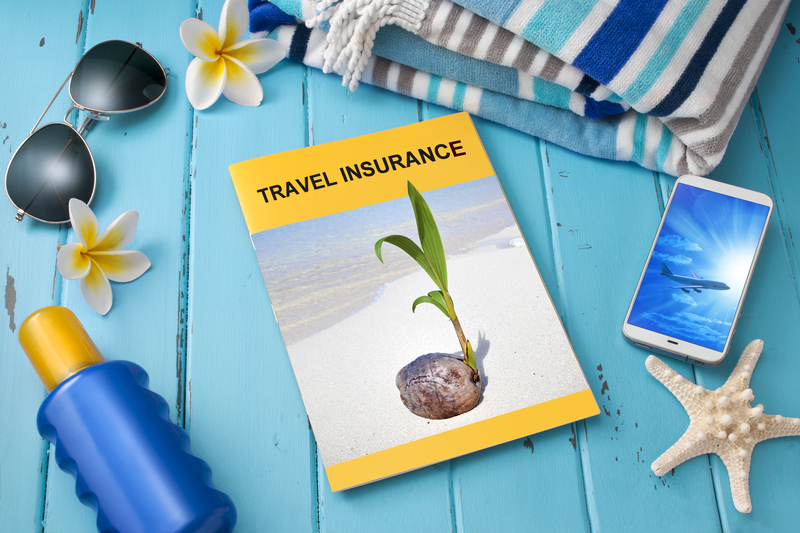
You’ve done your planning, scheduled time off, and made reservations for a well-deserved vacation. But what if something unforeseen happens–like lost luggage, flight delays, or a medical emergency–to upend the time away you had envisioned? You may want to add to your pre-trip checklist travel insurance, a type of policy that reimburses you for money you lose from non-refundable deposits and payments when something goes wrong on your trip.
A general rule to consider is that the more you’re spending on your trip, the more likely you’ll need travel insurance. Costs for international trips and cruises can add up quickly and being away from a safety net at home can be fraught with problems. But don’t hastily sign up for travel insurance and neglect to understand what is and isn’t covered by the plan you are considering. Do some comparison shopping for travel insurance and look for options that match your needs.
Policy Benefits to Consider
- Cancellation allowed for any reason
- Emergency medical expenses, including coverage for COVID-19 and dental care
- Emergency medical evacuation
- Trip cancellation reimbursement
- Ability to review a purchased policy and to reconsider enrollment without penalty
- Reimbursement for lost baggage
- Compensation for missed connection, travel delay, trip interruption or cancellation due to injuries, weather, hurricanes, or terrorism
- Coverage for lost or stolen passports
Mistakes to Avoid
- Skipping travel insurance
- Failing to find a plan that covers COVID-19 or another coronavirus outbreak
- Ignoring the limits of your coverage and not reading your policy thoroughly
- Not understanding “cancel for any reason” coverage
- A “cancel for any reason” policy must be purchased within 7 to 21 days of making the initial trip deposit. Also, you must cancel the trip no later than 48 hours before departure to get reimbursement under “cancel for any reason” coverage. Also, travelers may think they’ll get all their money back. But “cancel for any reason” coverage only provides 50% to 75% of your out-of-pocket expenses, depending on the level you choose. Don’t set yourself up for disappointment if you cancel your trip at the last minute and you can recover only half of your loss.
- Waiting until the last minute to secure travel insurance
- Buying travel insurance from an unreliable source
Limits to Think About
- Pre-existing medical conditions that may worsen during your trip aren’t covered unless you purchase a pre-existing conditions exclusion waiver.
- High-risk activities may not be covered, such as scuba diving; nor are problems that happen because you are intoxicated or are using drugs.
- Medical tourism is also a common exclusion, so if you’re going abroad for a face lift, travel insurance won’t cover hospital bills or aftercare.
Reasons to Buy Travel Insurance
Two major factors should influence your decision to buy travel insurance:
- Financial Risk: Are you worried about losing money because of a canceled, delayed, or interrupted trip, lost luggage, or a medical emergency?
- Medical Concerns: Are you traveling outside your home country where your insurance from home won’t cover you for an accident or illness?
Reasons Not to Buy Travel Insurance
- Last minute domestic trips
- Cheap domestic trips
- You can afford to lose your prepaid trip expenses
Resources to Buy Travel Insurance
At NerdWallet.com, Forbes.com, and TravelInsurance.com, you can find comparison data on travel insurance carriers and policies. By using these resources, you’ll be able to enroll in a plan suited for your needs when you’re ready to travel.
InsureYouKnow.org
At InsureYouKnow.org, you can file copies of your travel insurance policies, driver’s license, auto insurance policy, passport, health insurance cards, vaccine passport, and the credit cards you plan to take with you. If your physical credentials are lost or stolen while traveling, you can access recorded information online that you’ll need to prove your coverage or to start the process of obtaining new documents.
Safely Enjoy Summer Fun in the Sun
May 29, 2021

With students out of school and parents ready for a vacation, your summer planning may lead to seasonal activities and events outside during the warmest time of the year. While making a list of your fun in the sun options, keep in mind your family’s health and safety while avoiding the dangers of heat-related illnesses, water-related injuries, grilling hazards and food poisoning, allergy attacks, and the stress of traveling.
The Federal Occupational Health agency offers the following tips for balancing fun activities and sun safety.
Prepare for Heat and Sun
A big part of staying safe in the heat and sun is being prepared. Have an idea of how long you will be out in the sun and the heat, and then plan accordingly by:
- Limiting your outdoor activity, especially midday when the sun is hottest.
- Wearing and reapplying sunscreen as indicated on the package.
- Pacing your activity; starting activities slowly and picking up the pace gradually.
- Drinking more water than usual and not waiting until you’re thirsty to drink more.
- Wearing loose, lightweight, light-colored clothing that protects your skin.
- Wearing sunglasses and a hat.
- If possible, taking breaks from the heat and sun in a shady or air-conditioned location.
For more information, visit the Centers for Disease Control and Prevention’s (CDC) Keep Your Cool in Hot Weather! and Sun Safety pages.
Stay Hydrated
Dehydration is a safety concern, especially during the summer months. Be sure to drink enough liquids throughout the day, as your body can lose a lot of water through perspiration when it gets hot outside. Drinking plenty of water can be part of good nutrition, too. Snacking on water-rich foods like raw fruits and vegetables also can help keep you hydrated.
Without enough fluids, you may experience dehydration. Look for these signs:
- Extreme thirst
- Dry mouth
- Headache
- Muscle cramping
- Feeling lightheaded
- Foggy thinking
Learn more on the MedlinePlus Dehydration page.
Heed Water Safety Precautions
Swimming is an enjoyable way to both cool off and get some exercise, but it also takes extra precautions and vigilance. To lower the risk for water-related injuries or accidents:
- Always have adult supervision for children who are in or around water.
- Do not swim alone, and swim near lifeguards whenever possible.
- Learn to swim.
- If you have difficulty swimming, wear a life jacket when participating in water-related activities.
- Wear a life jacket when boating.
- Know local weather conditions and forecasts before swimming or boating.
For more information, visit CDC’s Water-Related Injuries page.
Additional summer safety reminders include the following tips from National Insurance Services:
Eliminate Grilling Risks
Grilling is a great way to make a delicious meal, especially during summer get-togethers and events. However, grilling carries a number of risks—from fire to food poisoning—that you must be aware of to keep your outing safe and enjoyable. Experts say that food poisoning peaks in summer months for two main reasons: bacteria grow fastest in warm, humid weather, and people generally do not pay as much attention to cleanliness when eating outside.
General Safety Precautions
- Do not allow children and pets to play near the grill until it is completely cool, and you’ve had a chance to put it away.
- Place your grill at least 3 feet away from other objects, including your house, vehicle, trees, and outdoor seating.
- Before using a gas grill, check the connection between the propane tank and the fuel line to make sure it is not leaking and is working properly.
- Only use starter fluid for barbecue grills that use charcoal. Do not use starter fluid for gas grills.
- If you suspect that your gas grill is leaking, turn off the gas and get the unit repaired before lighting it again.
- Never use a match to check for leaks.
- Do not bring your grill into an unventilated or enclosed space, such as a garage or inside your home. This is not only a major fire hazard, but it’s also a carbon monoxide hazard.
- Never grill on wooden decks, porches, or balconies.
Carcinogen Hazard Preventions
- Cook leaner meats that drip less grease. Opt for a turkey burger or a lean cut of beef, and cut visible fat from poultry. When fat drips into the coals or flames, smoke travels up to the meat and releases carcinogens.
- Marinate meat to reduce carcinogens by 87 percent. Herbs contain polyphenolic antioxidants, which prevent the formation of carcinogens on the meat’s surface.
- Scrub your grill with a wire brush after every use. This will prevent bits of leftover food from dropping into the grate and creating carcinogen-filled smoke.
- Use a nonstick cooking spray on the grill rack to prevent meat buildup.
Follow Food Safety Tips
- Wash your hands. You should do this before all types of food prep, and grilling is no exception. If you’re outdoors and there is no bathroom, use a water jug, some soap, and paper towels. Consider carrying moist towelettes for cleaning your hands.
- Separate raw and cooked food. Don’t use a plate or utensil that previously touched raw food to touch cooked food unless the utensil has been washed with hot, soapy water.
- Marinate your food in the refrigerator, not on the counter.
- Make sure food is cooked thoroughly to kill any harmful bacteria that may be present. Hamburgers should be cooked to 160 degrees Fahrenheit, or until they are brown all the way through. Chicken should be cooked to 165 degrees Fahrenheit.
- Refrigerate leftovers within two hours of being cooked—the sooner, the better.
Manage Allergies
Warm weather and high humidity can put a strain on seasonal allergy and asthma sufferers. It’s a peak time for certain types of pollen, smog, and mold. Below are some survival tips to help you manage your allergies during the summer months.
- Protect yourself during prime allergy time—stay indoors between 5 a.m. and 10 a.m., when outdoor pollen counts are usually the highest.
- Avoid extremes—going between intense outdoor heat and indoor air conditioning can trigger an asthma attack and other allergy symptoms.
- Wear a mask when mowing the lawn or if you know you are going to be around freshly cut grass. Also, take a shower, wash your hair, and change your clothes to remove any pollen that may have collected on your body. You should also dry clothing inside, rather than on an outside line.
- Patrol your yard for weeds such as nettle or ragweed and oak, birch, cedar, and cottonwood trees—they all can trigger allergies.
- If you’re allergic to bees, protect yourself. Wear shoes, long pants, and sleeves. It’s also a good idea not to wear scented deodorants, hair products or perfumes, as all of these can attract bees.
Travel Safely this Summer
The following tips can help you plan for a safe and fun road trip:
- Buckle up for safety; you’ll avoid a ticket, and more importantly, should you get into an accident, you’ll increase the odds of surviving the crash and reducing injuries for both you and your family.
- Get a good night’s sleep; drowsy drivers can be as dangerous behind the wheel as drunk drivers. And don’t think coffee or opening windows will be enough to keep you awake— there is no substitute for a good night’s sleep.
- Take a break from driving if you feel yourself getting drowsy. Get out of the car for some exercise or switch drivers if you have that option.
- Do not drink alcohol and drive—you put yourself and anyone around you in danger.
- Conduct a pre-road trip inspection on your vehicle—taking just 10 minutes to ensure your car’s tires are properly inflated, that the fluids are topped off, and that everything under the hood is all right—to identify and mitigate problems that could lead to future breakdowns.
Review CDC’s travel tips on the following topics that are continuously updated as needed:
- Domestic Travel During COVID-19
- When NOT to Travel: Avoid Spreading COVID-19
- Safer Travel Tips for Families with Unvaccinated Children
- Requirement for Face Masks on Public Transportation Conveyances and at Transportation Hubs
- Travel Health Notices
- Cruise Ship Travel
- International Travel During COVID-19
- Travel Recommendations by Destination
- After International Travel
- Travel Planner
- Travelers Returning from Cruise Ship and River Cruise Voyages
- Travel: Frequently Asked Questions and Answers
- Travelers Prohibited from Entry to the United States
- Communication Resources for Travelers
InsureYouKnow.org
When planning your summer vacations, keep track at insureyouknow.org of your health, automobile, boat, and travel insurance policies, as well as passports and COVID-19 vaccination records, for you and your family members. In case you face an emergency or need to prove your coverage, you’ll be able to refer to your secure documents online.
Spring Has Sprung! And Summer’s Not Far Behind!
May 14, 2021

Are you ready to spend time outside this spring and summer? Research documented in the article “Access to Nature Has Always Been Important; With COVID-19, It Is Essential” shows that outdoor activity year-round is important to overall health and wellness. In additional recent studies, exposure to nature or urban green space has been associated with lower levels of stress, reduced symptoms of depression and anxiety, and improved cognition in children with attention deficits and individuals with depression. One of the earliest studies to draw a conclusive link between time spent in nature and well-being was published in 1991. It found a 40-minute walk in nature, compared with walking in an urban space or reading a magazine, led to significant improvements in mood, reduced anger and aggression, and better recovery from mental fatigue. Being exposed to a natural environment is especially important now, after more than a year of enduring a global pandemic, restrictions are being lifted for people who have been fully vaccinated.
Safe Outdoor Activities
The Centers for Disease Control and Prevention (CDC) provides guidelines for choosing safer outdoor activities and offers the following tips before you venture outside when you make a break from being confined indoors during the pandemic.
- If you are fully vaccinated, you can start doing many things that you had stopped doing because of the pandemic.
- Fully vaccinated people can resume activities without wearing a mask or physically distancing, except where required by federal, state, local, tribal, or territorial laws, rules, and regulations, including local business and workplace guidance.
- These recommendations can help you make decisions about daily activities after you are fully vaccinated. They are not intended for healthcare settings.
- If you haven’t been vaccinated yet, find a vaccine.
If you are fully vaccinated, you can participate in the following safe outdoor activities that can improve your mental as well as your physical health.
- Walking, running, wheelchair rolling, biking, and skating
- Gardening
- Fishing and hunting
- Golfing
- Rock climbing
- Birding
- Playing tennis
- Kayaking, swimming, canoeing, diving, boating, and sailing
Safety Tips for Exercising Outdoors
The National Institute on Aging’s “Safety Tips for Exercising Outdoors for Older Adults” include the following advice that can be helpful to exercisers of all ages:
- Drink plenty of liquids when exercising outside.
- Stay alert by not talking on the phone as you walk and keeping the volume low on your headphones so you can still hear bike bells and warnings from other bicyclists, walkers and runners coming up behind you.
- Choose routes that are well-used, well-lit, and safe with other people present. Choose routes with places to sit in case you want to stop and rest.
- Be seen to be safe. Wear light or brightly colored clothing during the day. Wear reflective material on your clothing and carry a flashlight at night. Put lights on the front and back of your bike.
- Wear sturdy, appropriate shoes for your activity that give you proper footing.
- Always walk facing oncoming traffic.
- Walk on a sidewalk or a path whenever possible. Watch out for uneven sidewalks, which are tripping hazards.
- Look for a smooth, stable surface alongside the road.
- In warm weather, play it safe and prevent hyperthermia—a heat-related illness that includes heat stroke and heat exhaustion. Know the signs of heat-related illnesses and get medical help right away if you think someone has one.
The COVID-19 pandemic has highlighted the importance of green spaces and urban parks, especially during periods of lockdown. Even a short walk, an ocean view, or a picnic by a river can leave you feeling invigorated and restored.
InsureYouKnow.org
When you get outside and get going, be sure to carry proof of identification with emergency contact information, a list of your prescriptions, your cell phone, a small amount of cash, as well as your insurance credentials. You also can keep track of your insurance records, prescriptions, and emergency contact information at insureyouknow.org that will be helpful just in case you walk out the door without your printed IDs, you’ll be able to access information online in case of an emergency.
